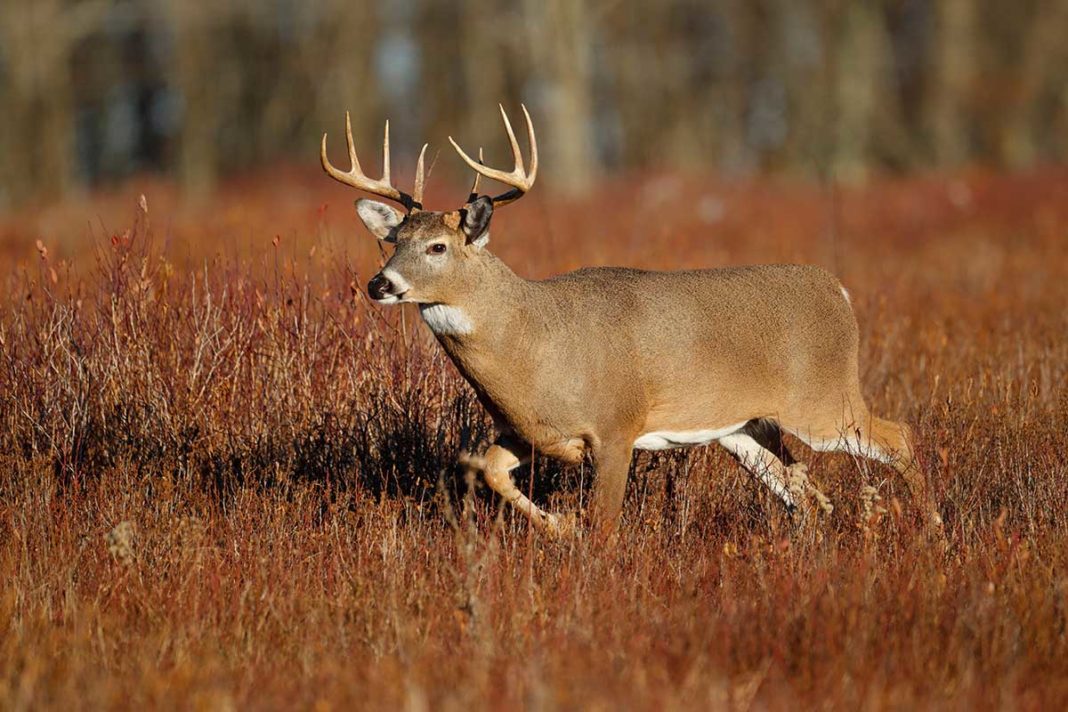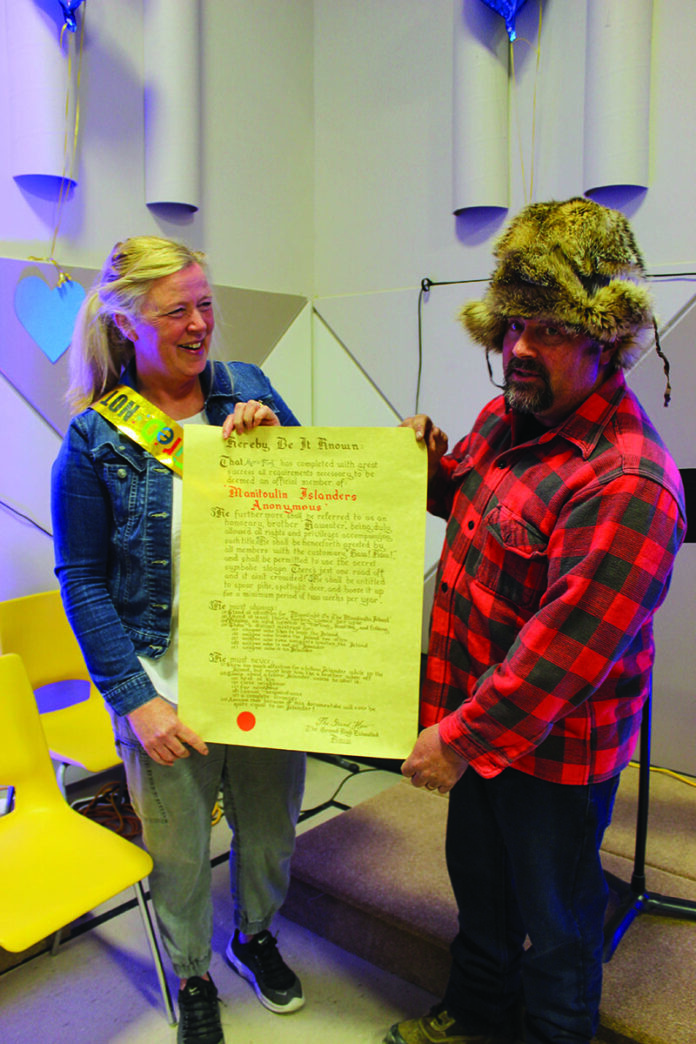3,058 deer harvested in 2023 Manitoulin hunt
MANITOULIN—While there were concerns raised that another mild winter has benefited the deer population on Manitoulin, which could mean an explosion of the Island herd in the future, the recommendation made from the annual Manitoulin deer management meeting last week will be to maintain the status quo in terms of antlerless deer tags available for hunters.
“Finding the balance is key but difficult,” said Denis Gendron, biologist with the Ministry of Natural Resources and Forestry (MNRF). He pointed out it is, “difficult to find balance, given divergent views around value and impact.” He pointed out the deer hunt provides the Island with substantial ecological, social and economic benefits. The deer can, however, damage crops, residential properties and ecosystems. There are also public safety concerns and it was noted that deer are not distributed evenly across the landscape. Social acceptance is below carrying capacity.
“I agree with Ian (Anderson)’s take for (Wildlife Management Unit) 43A, to maintain status quo, but for 43B I would like to see this go up slightly,” said Lee Hayden, a resident of Gordon/Barrie Island who also hunts the area. “There is going to be an explosion of the deer population soon. I have seen fawns this year that shouldn’t have made it through a normal winter. We are going to see a lot of triplets this year.”
“Last year the quota was increased by 1,500,” Mr. Hayden added. “Hunters have to get away from just wanting to shoot bucks.” He pointed out, “Baiting (of deer) has changed the dynamics on Manitoulin Island. I see loads of carrots being brought in. It is changing the deer habitat and because of this deer are being found where they wouldn’t ever be seen before.”
Mr. Hayden said he is concerned chronic waste disease (CWD) in deer is coming to the Island.
“I also have a concern that we in 43B have to increase the number of deer harvested or we are going to have a problem next year with the deer numbers increasing,” said Denis Goupil of Providence Bay.
Kevin Hutchinson, a member of the Little Current Fish and Game Club (LCFGC) said, “Lee (Hayden) made an interesting point about bucks. And I agree with Mr. Hayden, we should try to get to 100 percent of hunting tag applications being filled by increasing the number of deer tags by 500-1,000. We have talked about this in our club and everyone likes 100 percent for 43B. In areas like Bidwell and Honora Bay there are all kinds of deer.”
“I’ve never seen so many healthy deer around as I have this year,” said Mr. Hayden.
Bryan Barker of Billings Township said, “Billings has a very high concentration of deer. You will see upwards of 25 in fields. And the motor vehicle deer collisions are very high in the township.” He said last summer there were a lot of twin fawns around and he expects this trend to continue this year, with the deer population on the increase.
In preparing for the meeting Mr. Gendron said, “What we looked at is a set of indicators such as deer seen per hunter/hunter day, hunter success, harvest trends, winter severity. “We will talk about population targets and winter severity. And we will see the base benchmarks set over the yeas, and consider predicted population trends and the fall quota,” Mr. Gendron said at the meeting held April 23.
Provincially, while WMU 43A is moderate in terms of other WMUs in the province, 43B is high in terms of deer seen, hunter success, hunting effort, tags allocated and harvest intensity, said Mr. Gendron.
“Manitoulin Island is a very unique place for many species of animals, including deer,” said Mr. Gendron. “The deer hunt generates a lot of tourism, and Manitoulin is in the top three for the highest population and harvest numbers in the province.”
Mr. Gendron explained in the area of deer seen per hunter day, the years of 2017-2019 saw harsh winters, but things have been relatively stable for the past few years and there has been an increase in the last two years. Last fall, we saw a small decrease in the deer seen per hunter day, however, this is expected to increase this year.
Hunter success in both WMUs decreased slightly last fall but from 2020 the trend is an increase.
“It seems to be during the archery (bow) hunt that hunters are having a lot more success,” said Roy Polsky.
“There has been a dramatic increase in archery in 43A over what there was 10 years ago,” stated one hunter.
As for the winter severity index, “this past winter was pretty phenomenal, it was a good winter for deer,” said Mr. Gendron. “This year was unusual, there was really only two months of winter where there was some actual snow on the ground. Across the province in many districts the severity index was less than half of what it is historically.” No snow stations in the province reported a severe winter. In looking at the winter severity index for WMU 43A from 1986-2024, “this was one of the easiest one or two winters. And for 43B it was very similar.”
In the area of wolves seen per hunter day in 2023, for 43A there was a slight increase and in 43B the numbers were stable. Mr. Gendron explained that Mr. Anderson, a local trapper, said he normally traps 40 coyotes over the winter, but this dropped to 21 this year. “So, things are not too bad on that front.”
Last year the tag quota for 43A was increased from 300 to 400 and in 43B from 4,000 to 5,500, Mr. Gendron told the meeting. The tag allocation success rate for 43A was 59 percent and 99 percent for WMU 43B.
In providing a summary for WMU 43A Mr. Gendron explained, “historical hunter demand has decreased over time. There has been a habitat related population decline over a 15-20 year period through to 2010 (reduced timber harvest). The deer population is stable to increasing from 2010-2018. The winter of 2019 was extremely severe which led to significant winter mortality and a very poor fawn crop.” However, “the winters of 2020-2024 were all favourable for deer. The number of tags increased from 300 to 400 in 2023, and the goal for 2024 hunt is to maintain population levels.”
“For WMU 43B the density, hunting pressure and harvest are at the high end of the scale provincially,” said Mr. Gendron. “There was an active effort to decrease the deer population from 2003 to 2010, but it has generally been increasing from 2010-2017. The 2017 harvest was the highest since 2007.” With winter of 2019 being severe there was high mortality and a poor fawn crop, and a spike in predator populations in 2019 was linked to winter severity and deer mortality. “Populations have since declined.” He said the impact of the 2019 winter was significant, while winters from 2020-2024 have all been favourable and there was a tag increase from 4,000 to 5,500 in 2023. “The goal for the 2024 hunt is to maintain population levels.”
“In 43B we are leaning toward keeping the same levels as last year. Based on all indicators we are in a pretty decent spot,” said Mr. Gendron. “We have not seen a sharp increase or decrease in deer population. Ian (Anderson) told me he supported no change.”
“I think you are spot on for the most part, and I concur with Ian,” said Paul Methner. “It will be interesting to see what comes out this year, but things seem to be on the right track; it looks good.”
“After the fall hunt I heard from a number of hunters that they had not seen bucks,” said Mr. Methner. “I think this is due to a combination of everything going on. I hunt in an area where there are a lot of hunt camps, and the consensus was that they had only seen a couple of bucks in Central Manitoulin during the hunt.”
Bob Florean said there is a lot of baiting of deer going on locally.
“It did seem we heard that a lot of people are baiting deer and we heard complaints from some camps because they don’t bait and didn’t see deer during the hunt because all the deer are going into their neighbour’s property,” said Mr. Gendron.
Mr. Florean said in the past there has been a concern raised by farmers with deer damaging agriculture, particularly in areas like Gordon/Barrie Island. And farmers had applied for deer removal authority (DRA) permits. “We have to keep on top of this. Maybe we need to focus on this in some areas.”
There was a question on how successful the DRA was on farmers’ property. “The numbers were limited, maybe 10 tags were available,” said Mr. Florean.
Glen Polsky reported that at his hunt camp during both the archery hunt and gun hunt there were very few deer seen. “I didn’t see the purpose in increasing the quota numbers last fall. But with another mild winter this year I see a reason for it,” he said, adding to those supporting a slight increase in the number of tags available in 43B this fall.
Julie Poirier Mensinga of the Ontario Ministry of Agriculture Food and Rural Affairs said, “I did reach out to a few farmers to get a feel for what they are seeing. And I reached out to OFA to see if they have carried out a wildlife damage survey recently. They haven’t done this since 2021-2022, and it was a provincial survey. The farmers I reached out to had some issues with deer, most are horticulture crop producers, and one farmer put up a seven foot fence around orchards and this seems to have cleared up the deer problem, but it was an expensive solution.”
“Another farmer is using electric fencing to keep deer out, but it has not been 100 percent effective. And it has been expensive,” said Ms. Mensinga. “They are seeing a significant number of deer. Maybe a more in-depth study needs to be carried out. There is damage going on.”
Nicholas Reiche, Management Coordinator for the MNRF Sudbury District said, “Part of the issue is trying to grow crops in a high deer population area. Its tricky navigating that one. Based on the lack of data available maybe OMAFRA (Ontario Ministry of Agriculture, Food and Rural Affairs) could carry out a study to bolster the numbers.”





